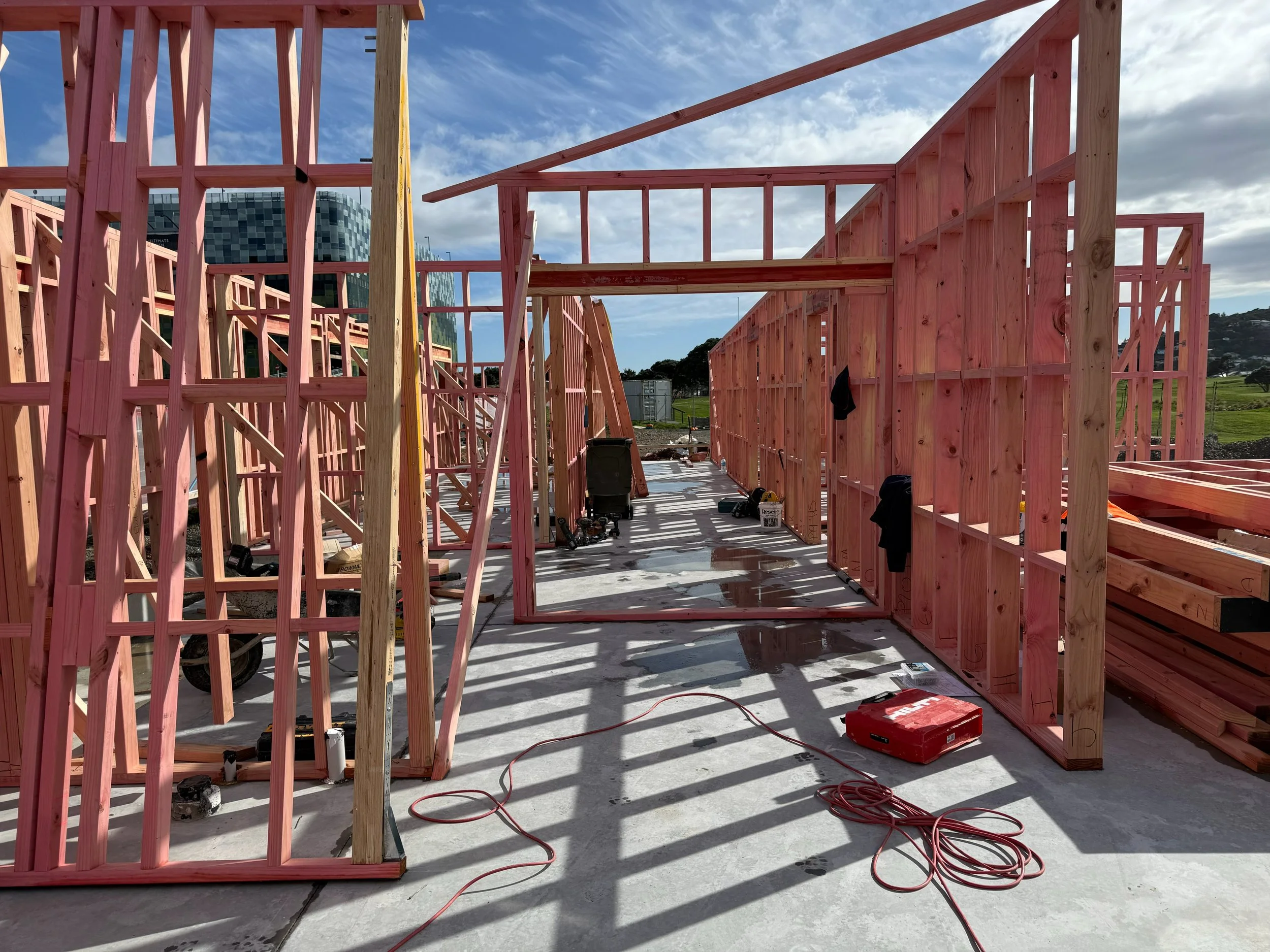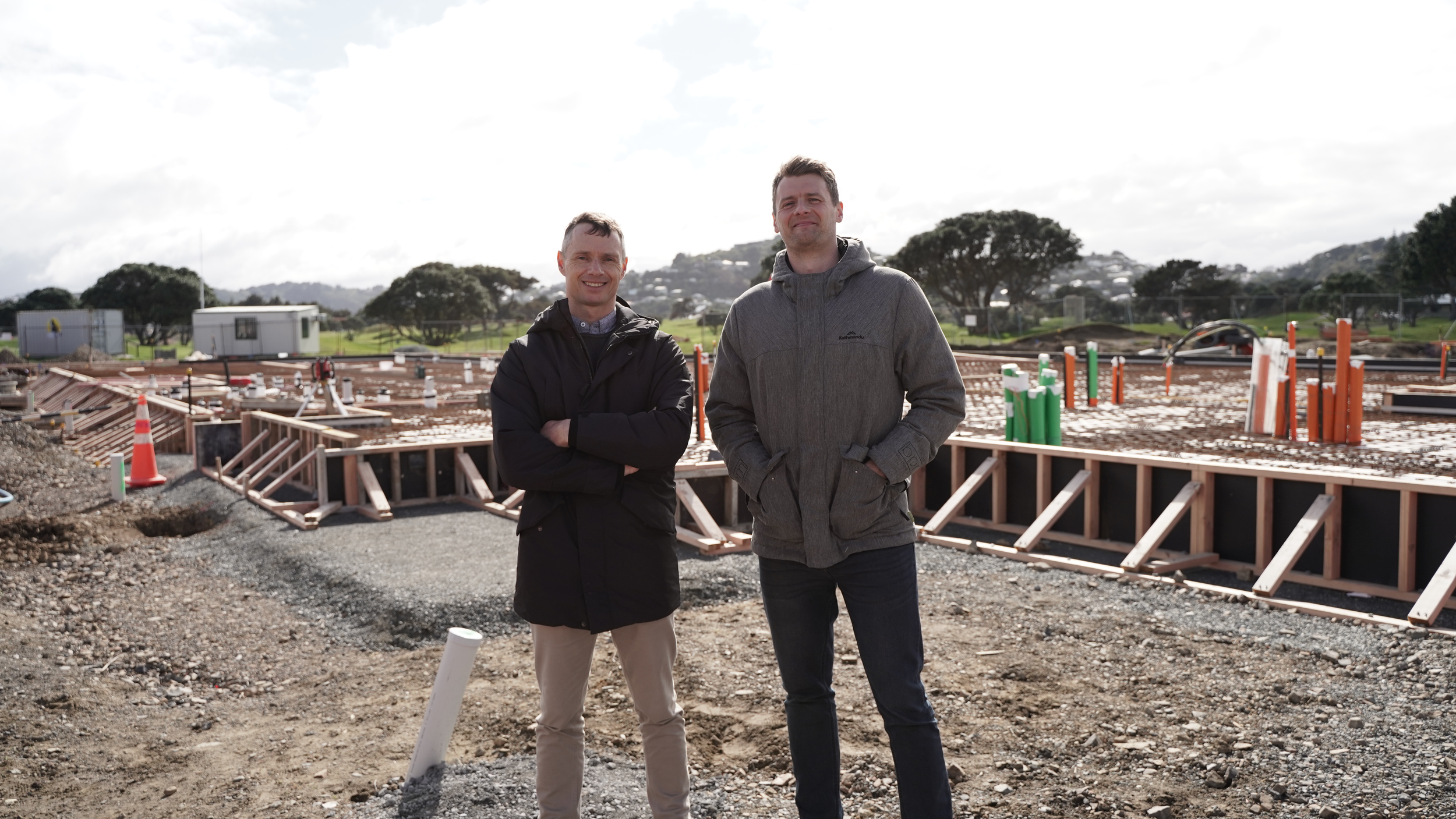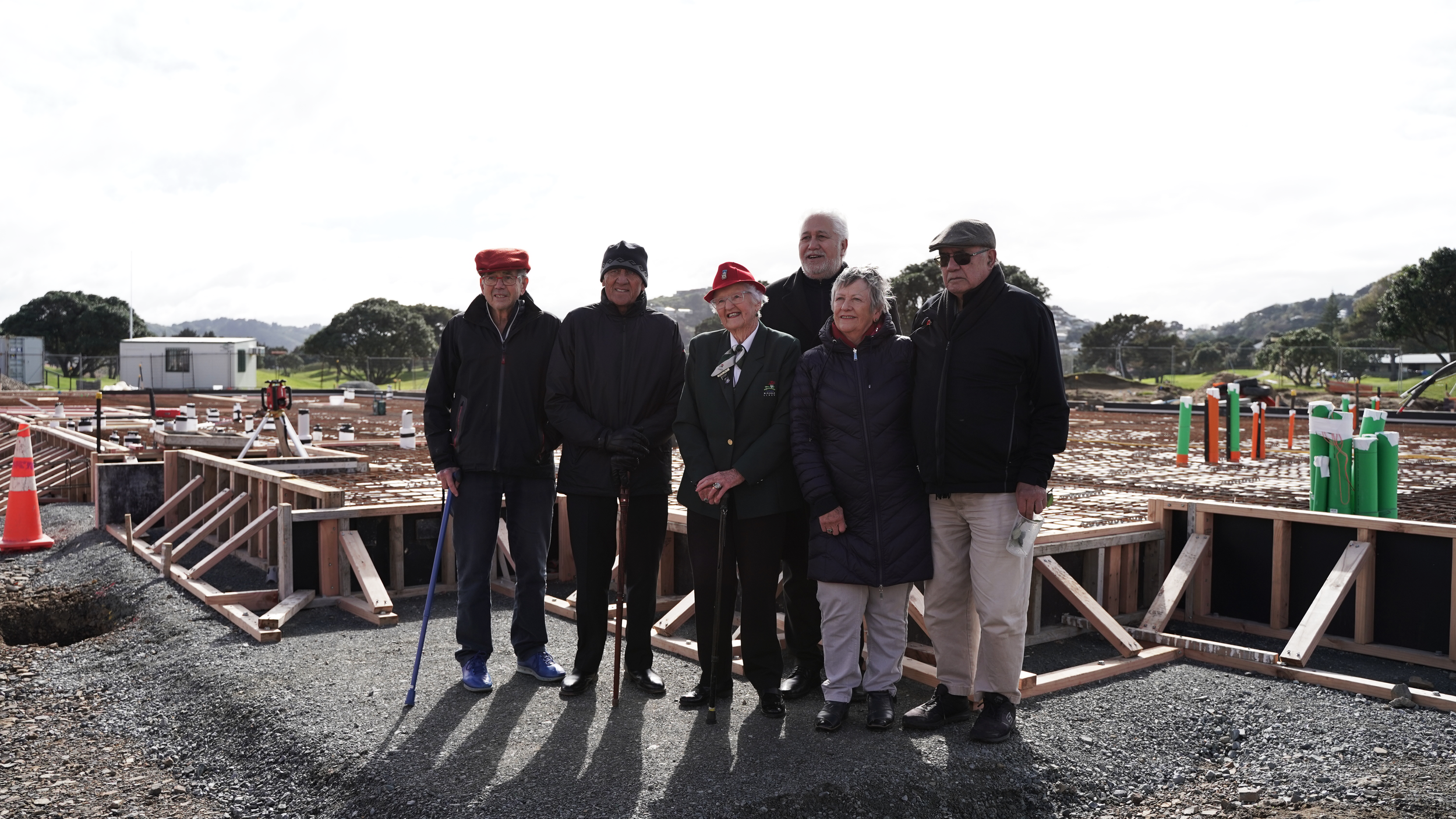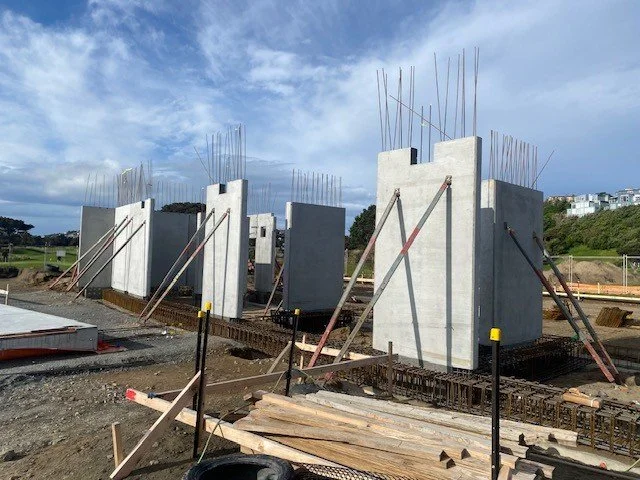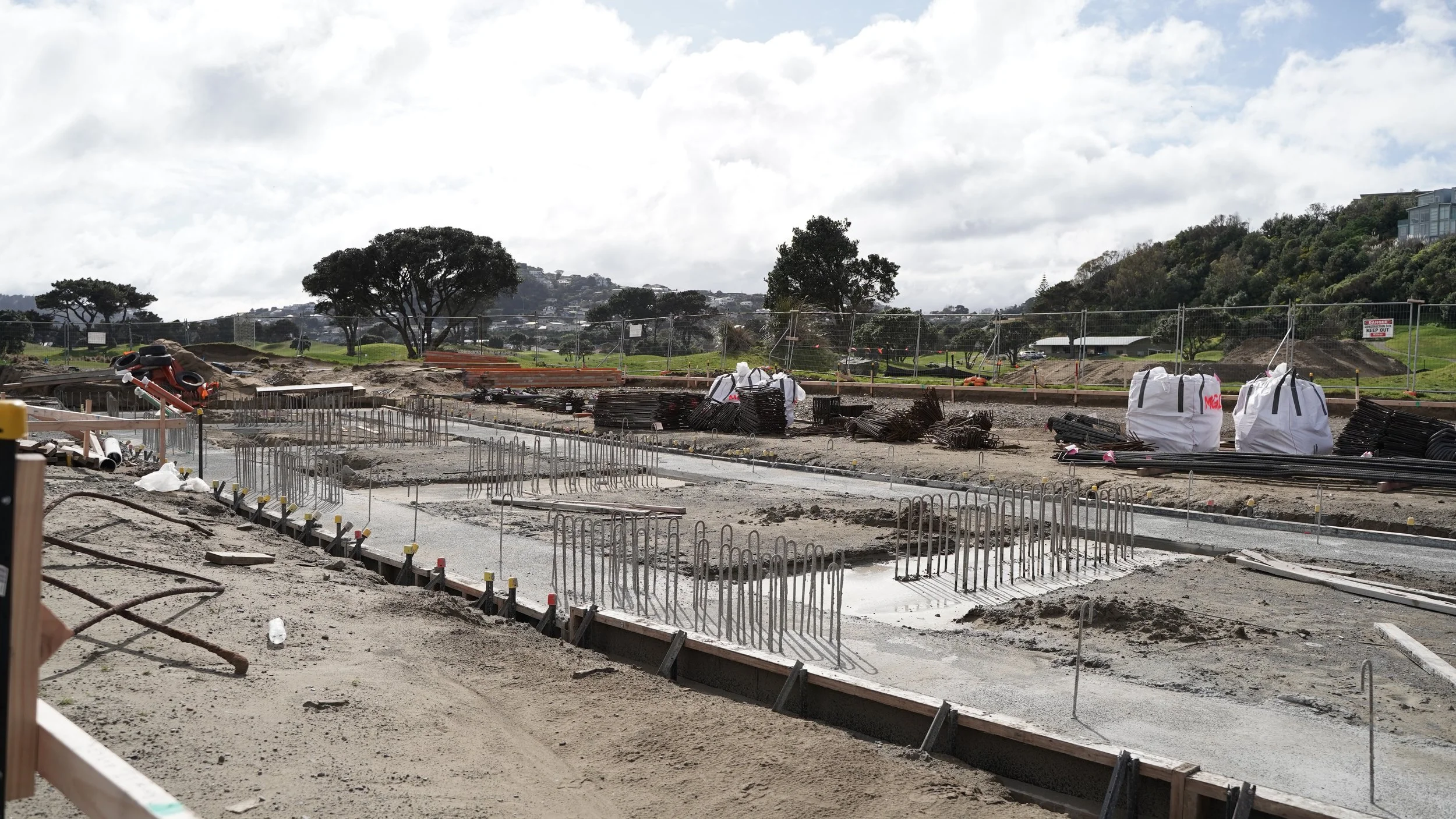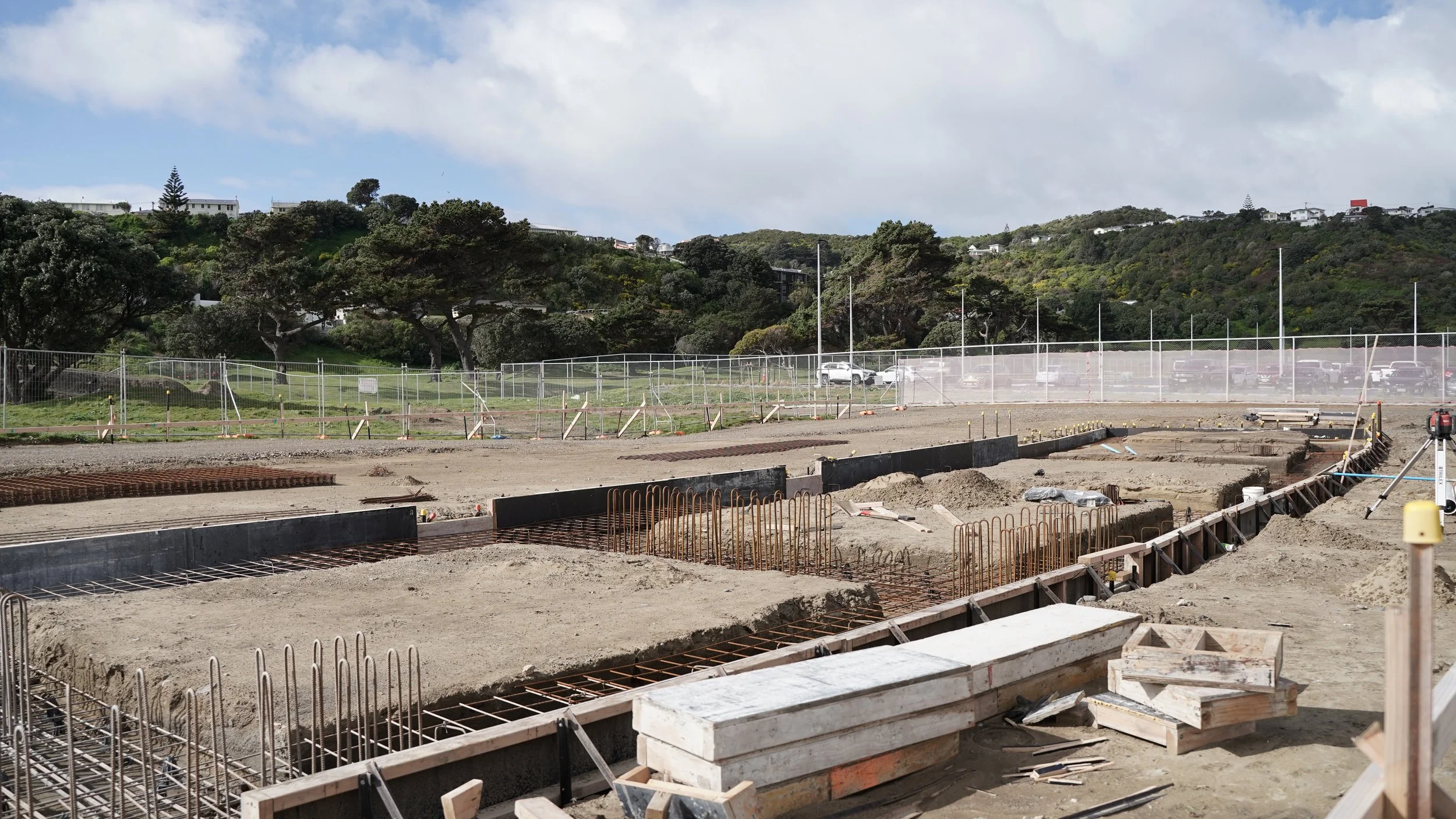Miramar Links | Miramar Golf Club & Course Regeneration
Client: Miramar Links
Project Type: Recreational Facility, Sporting Facility, Community, Infrastructure, Advisory, Cost Management
Project Managers: Drew Coleman, Dan Bradley
Location: Miramar, Wellington
Watch a timelapsed demolition of the old clubhouse.
-
The Miramar Links redevelopment presented a bold and multifaceted challenge: reconfigure and elevate the golf experience on a dramatically reduced footprint, following the sale of half the club’s land to Wellington International Airport. With expert planning and collaboration, the BPM team is turning a potential setback into a transformational opportunity.
The completed courseworks were named a finalist in the 2025 Property Council New Zealand Awards, under the Holmes Group Tourism and Leisure Property Award category.
Project Scope and Vision
At the heart of the $16.2 million redevelopment was a vision to future-proof the historic Miramar Golf Club, by delivering a world-class 9-hole course that could rival traditional 18-hole experiences.
This meant reimagining the course design with renowned golf architect Scott Macpherson - integrating strategic shot-making and modern playability, and laying the groundwork for a new clubhouse and facilities. Including the ‘Tuataras’ - New Zealands second largest 18-hole putting green!
To complement the updated clubhouse build, a state-of-the-art dual level 36 bay (and Wellington City’s first) driving range is in the works… plus an operational hub & café in the form of the First Tee Precinct and many more impactful additions, some of which are now open and operational. -
Stakeholder Engagement
Changing a beloved golf course is no small feat, but monthly Project Control Group (PCG) meetings ensured continuous dialogue between stakeholders. BPM’s proactive reporting kept everyone aligned, while collaboration with club leadership helped gain vital member support. A majority 65% vote to green-light the project with member buy-in was achieved! Strong stakeholder engagement is ongoing as the work progresses.
Sustainability and Environmental Leadership
Environmental protection and sustainability was was front and centre. The project employed:
A cut-and-fill earthworks approach to minimise transport and carbon emissions.
Native planting to enhance biodiversity and reduce soil erosion.
Restoration of natural waterways and preservation of fish, lizard, and bird habitats in compliance with Civil Aviation Authority requirements.
Hazardous material management, erosion control, and dust mitigation strategies were implemented meticulously during demolition, ensuring safety, cleanliness, and compliance.
The new build clubhouse will be prepared with a solar-ready infrastructure.
A large focus on reusing and salvaging everything from fibreglass insulation and timber, to crushing concrete for reuse in the demolition contractor's own quarry has resulted a lot of savings across a reduction in landfill and Co2 emissions… every step was been carefully considered and grounded in smart resource management.
Risk Management
Operating within Wellington Airport’s controlled airspace added a unique complexity. Risks, particularly around underground utilities, were mitigated using ground radar and isolation techniques. A live operational course also meant staging construction to avoid member disruption, with seamless opening and closing of holes during work.
Financial Strategy and Results
From a budgeted $4.06M, Phase One was delivered for $3.3M - under budget and ahead of schedule. This was achieved by:
Smart risk management and early site investigations.
Value engineering and leveraging in-house greenkeeping teams for turf works.
Maintaining quality while significantly reducing reliance on subcontractors.
Project Delivery and Quality Assurance
The redevelopment included regular site inspections, weekly meetings, and course architect sign-offs on shaping works. Safety protocols and environmental monitoring ensured best-practice compliance throughout.
Innovation and Technology
The project employed a state-of-the-art, digitised irrigation system, allowing precise control over which areas of the course received water, enhancing efficiency, and supporting the ecology of the course. No one wants to putt through puddles.
As developments progress, we’ll be able to share more specfics around the installation of a state-of-the-art, dual-level, 36-bay driving range, with advanced swing and ball-flight tracking!
Community and Social Impact
The redevelopment worked around a live course - ensuring continued access for members, as well as aiding in the retention of members through preserving their much-loved and historic course.
With a new slew of features, the course can now also focus on attracting newcomers by enhancing appeal and lowering barriers to entry by providing options for all levels.
A lot of the equipment and finishings of the old clubhouse have been gifted back to members, local groups and sports clubs, further cementing the clubs’ positive social impact.
Compliance and Regulation
From a complex resource consent process to demolition & building under rigorous environmental protocols such as wildlife management and waterway cleanliness, the project stayed firmly within regulatory bounds – including strict civil aviation requirements!
-
A Transformed Asset
The revitalised Miramar Links course is a win for the club, the city, and the sport. With new flexibility, improved facilities, and modern aesthetics, it’s poised to attract golfers from across New Zealand and beyond, as well as a preserving the legacy of a beloved historic club.
Economic and Community Impact
BPM worked in a financial advisory role providing costing, and budgetary amounts to inform the board, helping to gain majority membership votes to enable works to commence.
What began as a response to land loss evolved into a sustainable and strategic repositioning of the club. The redevelopment improves member retention, invites community use, and sets the foundation for future growth through new revenue streams in Phase Two.
The project looks to encourage more people to take up golf, boosting the local economy and promoting a healthy lifestyle within the community (something we couldn’t be more on board with). The modernised facilities ensure continued growth and engagement from both members and the public.
Future-Ready
Phase One is just the beginning. The vision includes a new clubhouse, continued ecological enhancement, and future sustainability certifications. With plans for monitoring member feedback and usage, Miramar Links will continue evolving as a premier destination for play, relaxation, and connection.
Building Experiences, Not Just Facilities
Let’s talk about how we can bring your leisure or tourism concept to life





